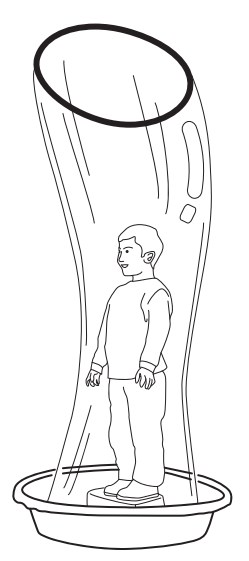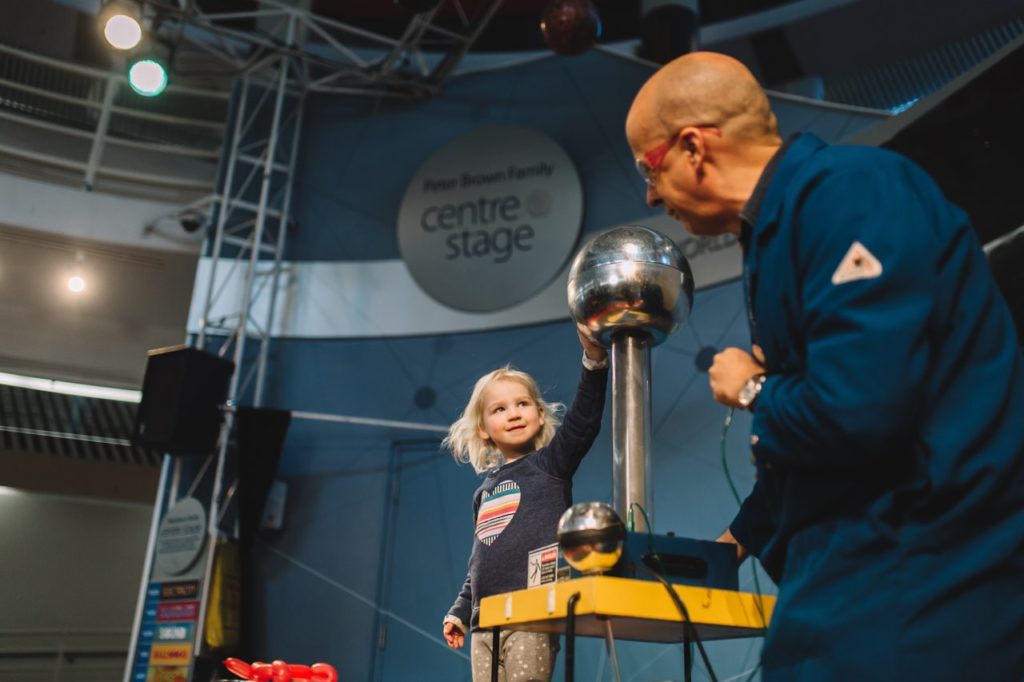Objectives
Materials
Key Questions
-
When does a bubble pop?
-
How does size effect the popping of bubbles?
-
How does elasticity help make bubbles?
-
What would happen if the bubble solution didn’t have elasticity?
What To Do
Preparation
- Make 18–23L of bubble solution and store overnight to let it “age.”
- Practice soaking and lifting the hula hoop straight up to form a large tube of bubble solution.
Teacher Tip: If you are having trouble finding a small kids’ pool for this activity, try asking for a “dog-washing pool.” They tend to be available in small sizes.
Demonstration
- Pour at least 14L of bubble solution into the bottom of the pool and wet the sides with the solution.
- Place the hula hoop in the bottom of the pool and the stool in the centre of the pool.
- Hold the stool steady (the pool floor is slippery!) as a volunteer carefully steps onto the stool.
- Bring the volunteer’s arms down to their sides and with a steady hand, slowly pull the hula hoop straight up out of the pool and over the top of your volunteer’s head, enclosing them in a “bubble tube.”
- Bring the hoop down carefully (don’t bonk your volunteer!) and hold the stool steady as he or she dismounts.
- Repeat with other volunteers (you’ll have lots!)
Teacher Tip: For best results, run this demonstration indoors as winds will interfere and pop the bubble if you are outside.

Extensions
-
Can you touch a bubble without popping it? How?
Other Resources
Exploratorium | Bubbles
Soap Bubbles | Soapbubble.dk


